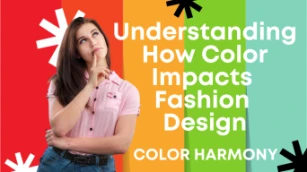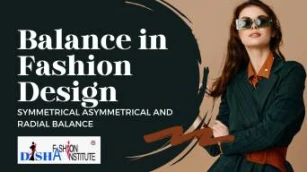Table of Content

Here, we will learn about the artistry and cultural importance of patterns and also discover simple methods to create and apply patterns to your belongings at home. So, let's embark on this journey and explore the enchanting realm of textile patterns together.
What is Pattern in Elements of Design?
Patterns are repetitive designs, motifs, or arrangements of elements that can be applied to fabrics and materials in a structured manner to create a unified and harmonious visual effect. Patterns can be simple or complex, abstract or representational, adding interest, texture, and character to the fashion pieces by evoking specific emotions or communicating a particular theme or concept.
Fabric patterns can be created by lines, dots, shapes, and colors. These patterns can be arranged in a thousand ways which can be subtle or intense, large or tiny, bright or dark, even or uneven, and spaced or clustered. Designers can get their ideas for patterns from worldwide natural elements like flowers, leaves; folklore or history; architecture, wallpapers, cartoons, and people’s hobbies.
Types of Patterns in Elements of Design
Here, we have divided the pattern styles into the four most common categories as follows
(A) Geometric Patterns
These patterns consist of repeated geometric shapes like circles, dots, lines, triangles, squares, hexagons, and other polygons. They also refer to textural patterns, stripes (vertical, horizontal, diagonal), checks, and plaids that are woven, printed, or knitted such as Gingham, left-hand twill, striped chambray, window pane linen, or pinstripe. Geometric patterns often create a sense of order, stability, and precision, and offer a fresh and up-to-date look, suitable for fashion-forward and trend-conscious consumers.
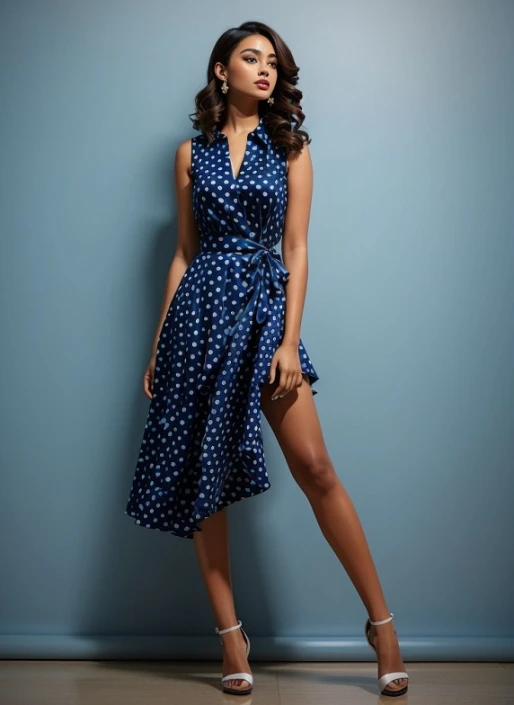
(B) Conventional Patterns
Conventional patterns refer to naturalistic motifs that are mannered in a way to combine the rhythm of stripes with the soft natural charm of floral patterns. For example, fancy woven stripe on dimity, woven silk brocade, or block print on linen.
(C) Naturalistic Patterns
This kind of pattern refers to floral, leaf, and animal motifs like leopard spots, tiger stripes, and paisley motifs that express aesthetic, graceful appeal, thus making it popular for women's clothing. Naturalistic patterns bring a sense of organic beauty and harmony to fabrics, making them popular.
For example,
i) Tropical leaf prints are an excellent choice for beach casual wear that gives a cool look to the wearer.
ii) Animal-inspired patterns, like zebra stripes, leopard spots, or snakeskin adds a touch of exoticism and luxury to fabrics.
iii) Fabrics with marble-like patterns of swirls and veins seen in natural marble stone create a luxurious and elegant look.
iv) Patterns of clouds, sky, or celestial bodies as well as coral, sea-shell inspired motifs or water ripples inspired motifs are great choices to create a dreamy and ethereal atmosphere on fabric.
v) Honeycomb patterns which are in hexagonal shapes can be classified as both geometrical and naturalistic patterns.
(D) Traditional Patterns
This kind of pattern can be geometrical, conventional or naturalistic, or any combination of them, but the fact why they are called by these names is because there are many patterns used in many civilizations through the ages and making them symbols for a particular culture.
For example,
(i) Bold intricate geometric patterns of the West African country, Ghana called Kente, are woven with vibrant and symbolic designs.
(ii) Paisley, a teardrop-shaped motif with intricate designs inside originated in India and Persia and is associated with rich cultural heritage.
(iii) An Southeast Asian dyeing and weaving technique called Ikat involves dyeing yarns before weaving and making beautiful abstract geometric motifs on the fabric. This is widely practiced in Odisha, Gujarat states of India; Indonesia, and many south-east Asian countries.
(iv) Batik, an Indonesian wax-resist dyeing technique is used to create intricate patterns on fabric which involves applying wax to the fabric before dyeing, creating unique and vibrant designs. This technique is also widely used in South and Southeast Asia.
(Indian batik)
(Indonesian intricate batik)
(African batik)
(v) Tartan or Plaid weaving that involves crisscrossing horizontal and vertical yarns of different colours is associated with Scottish heritage. Similar plaid patterns are also associated with Indian ancestry, for example, Bengal’s Gamcha, and Madras cotton from Tamil Nadu.
(Scottish Tartan)
(Bengal)

(Madras)
(Madras)
(vi) Toile de Jouy refers to a fabric with scenic or narrative patterns, often depicting pastoral or historical scenes in a single colour on a contrasting background. It is richly associated with France.
(vii) Chinoiserie is a decorative style featuring Chinese-inspired motifs, often seen in textiles during the 18th century, and is also very popular throughout modern China and its neighbouring countries.
(viii) Navajo patterns are associated with Native American textiles that reflect their cultural symbolism and spirituality.
(ix) Aztec or Mayan Patterns are inspired by the civilizations of the same name from South America and are hugely consistent with colourful vibrant geometric patterns.
(x) Suzani is an embroidery technique from central Asia, particularly Tajikistan, Uzbekistan, and Kazakhstan features floral and geometric motifs, commonly found in fabrics from Uzbekistan and other surrounding regions.
There are a lot of traditional patterns around the world which are rich in their own cultural field.
How to Print Patterns on Fabric?
Printing and dyeing are the most important things when it comes to applying patterns on fabric. Patterns can be printed on fabric using various printing techniques, each with its own advantages and suitable for different types of designs and fabrics. Here are common printing methods that you can follow at home easily:-
(i) Block Printing
Block printing is one of the earliest forms of printing that involves a carved wooden block dipped in ink or dye and then pressed onto the fabric repeatedly. Block printing can be done using vegetables as well. This printing method allows for handmade, unique designs at low cost, and small investment and is commonly used in ethnic and artisanal textiles.
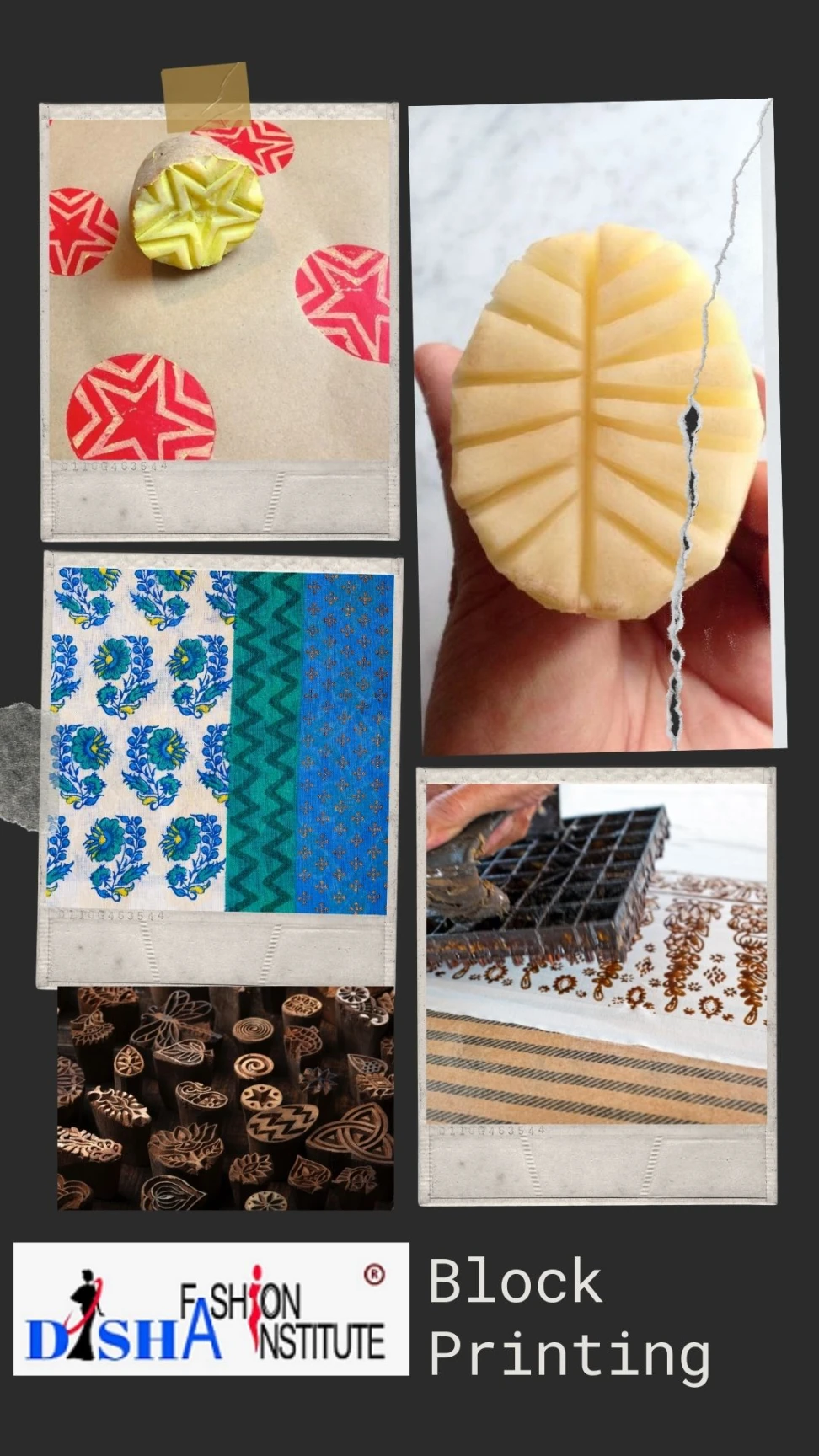
(ii) Screen Printing
Screen printing, a traditional and widely used method is based on the stenciling process. A fine mesh screen is created and the areas not to be printed (negative image of the pattern) are chemically blocked out. A different screen is needed for each colour required. A squeegee is used to push the printing ink through onto the cloth. This may be done by hand or by a machine, depending on whether the fabric is a sample, a “one-off” or one for mass production. This kind of printing is also very easy to use because the materials are easily available in the market at a low cost, requiring a small investment. This method is widely used in boutiques and ateliers.

(iii) Burn-out Printing
In the Burn-out printing or devoré printing technique, a chemical is applied in the desired pattern onto a fabric constructed from two fibres. The chemical destroys one fibre and creates sheer areas. This process results in a unique and visually interesting design with a combination of solid and translucent areas. Burn-out printing is often used to achieve intricate and delicate patterns, floral motifs, and lace-like patterns adding depth and texture to the fabric.
(iv) Discharge Printing
It involves removing the colour from certain areas of the fabric to create a pattern. A discharge agent is applied to the fabric to remove the existing dye. The fabric can be dyed again in your desired colour. This printing hack is absolutely cool. It can be tried at home as a DIY project.
(v) Engraved Roller Printing
Engraved roller printing is an industrial method that produces a continuous design on a piece of fabric and has images engraved onto a metal roller. The roller is inked and as it passes through the fabric, the pattern is transferred to the latter under pressure. This printing method becomes costly as it requires different pre-designed metal rollers for different patterns, and space for work which is often unaffordable at home.
(vi) Heat Transfer Printing
Heat transfer printing works by transferring the pattern from a special paper or film onto fabric using heat and pressure. The desired pattern is first printed on the paper, and then the paper is placed on the fabric and pressed with a heat press machine. This easy method is widely used for custom prints on fabrics like t-shirts and sportswear.
(vii) Digital Printing
Digital printing can be applied directly to fabrics from the computer via an inkjet printer. The fabric is spread flat on a printing bed or roll, and the printer's print heads move back and forth, making print according to the design file. Very high-definition images can be achieved and many colours can be printed without the need of using numerous screens. This technique offers several advantages over traditional printing methods as it requires less time, provides identical patterns all over the fabric, and also offers long-lasting colours making it increasingly popular in the textile industry.
(viii) Tie-dye & Shibori
Dyeing and Shibori (a Japanese resist-dyeing technique) both are traditional printing and fabric manipulation techniques that create unique and beautiful patterns on fabric and involve using dyes and various folding, pleating, tying, stitching, and clamping techniques to create distinctive designs. They offer endless possibilities for creating unique and personalized patterns on fabric which can be achieved very easily with skills and innovative ideas.

(tie-dye)
(shibori)
Conclusion
The art of patterns on fabric is a tapestry of creativity, culture, and timeless appeal. From ancient to modern ages, each design holds a cultural significance. Patterns add depth, character, and visual allure to textiles, shaping the fashion landscape and connecting us to our heritage. As we celebrate the diverse motifs, techniques, and artistry woven and printed into fabric patterns, we are reminded of the beauty that lies within this dynamic and ever-evolving wearable art form.
All Topics on Elements of Design in Fashion
To delve into all the subjects about elements of design in fashion, simply navigate through the list of blog posts below. Click on the headings to access the articles you're interested in reading.

Color Psychology in Fashion Design
Impact of Color Psychology on Fashion Design: Exploring 12 Transformative Role of Color

Elements of Design Line in Fashion
Elements of Design | Lines in Fashion | Creating Optical Illusions With Lines

Elements of Design in Fashion
7 Elements of Design in Fashion You Must Understand as a Fashion Designer
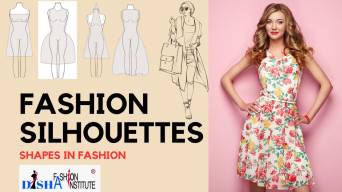
Types of Silhouettes in Fashion
Types of Silhouettes in Fashion | 12 Different Types of Fashion Silhouettes Explained
All Topics on Principles of Design in Fashion
To explore all topics on principles of design in fashion, browse the list of blog posts below and click on the relevant heading to access the articles.

How to Contrast Colors for Clothing
How to Contrast Colors for Clothing | 8 Ways to Create Colour Contrast in Fashion

Principles of Design in Fashion
10 Principles of Design in Fashion You Need to Know to Become a Fashion Designer
Explore Free Courses
Begin your fashion journey with our free fashion design foundation course. Dive into the world of style and creation today!
Fashion Designing Foundation Course
Join Fashion Designing Course
Enrol in our certificate courses for fashion designing and textile designing


